New Vrindaban’s Varsana Swami speaks on “Prosperity of the Earth Culture”
Prosperity of the Earth Culture
By Varsana Swami
July 2014
In healthy families and communities, both male and female are valued equally. A flourishing child’s psyche is guided and protected by the father figure, while the mother figure nurtures growth and development. Without such a stable structure, children perceive a hostile world (lack of feminine nourishment) within an empty universe (lack of masculine direction giving meaning and purpose). Without proper relationship to mother and father, a suffering condition develops which tempts its subjects with intoxication in order to fill the void and dull the pain.
Without loving families and communities, we feel inadequate, lost, with no sense of belonging. Unable to tolerate, we rapidly fill that void with artificial types of happiness. These “quick” fix solutions simply exasperate the distress.
In fact, in current times, we see how everything has to be faster and faster. “Snail” mail is outdated and high speed internet is considered a necessity of life which can answer all of our dilemmas. We live in a society where the price of fixing something exceeds the cost of a new one. Modern consumerism requires petroleum and fuel from the earth, drawing out more of her energy. Although it is simpler for the individual to dump broken items and waste into a landfill, the toxic waste burdens Mother Earth, kills our life support systems, and concurrently pollutes our collective unconscious.
As this mentality expands, it pervades within the realm of our relationships which also become disposable commodities. There is not enough time to cultivate meaningful connections. Accustomed to the comforts and luxuries of technology, parents work harder and longer to earn more money to provide what the global and socially transmitted disease of Affluenza (addiction to modern conveniences and the narcissism that it aggravates) deems as “normal”. There is therefore less time and energy for children.
Having strong relationship with both parents offers more than mere emotional stability, it furthers connection to the supreme seed-giving Father of all (Krishna) and the original Mother (Radha), the tender-hearted feminine beloved of the Lord. Organic lifestyle and quality time with parents can help offspring naturally develop faith in God above (dharma) and respect for Mother Earth below. Such healthy individuals propagate the perennial seeds of prosperity, living in communion with God’s plan.
Conversely, the ongoing disintegration of our culture, of our families and communities, and of sustainable infrastructures, has destroyed our natural sense of rejuvenation and regeneration. It has become evident to many that we need to “slow” down and develop a long term scheme that will conserve our natural resources, as well as preserve our relationships. However, Krishna has already created such a system. Maybe it is time to re-examine how to incorporate His gifts.
Understanding our relationships, our place and purpose, facilitates God’s original plan and will to resonate and blossom within us. It is our dharma, our constitutional position, to feel and experience our relationship to the Lord. In the Varnashram system, agrarian lifestyle naturally appreciates and utilizes male and female energies in order to maintain a balance. Honoring Mother Earth, we develop genuine respect for birthing (renewing), nurturing and growth processes. We value our many mothers which include, our human mother, Mother Earth and Mother cow. The Male figure in the Agrarian society is represented by the Bull – the protective and providing father.
To re-establish an ox program as a component to a more holistic lifestyle will facilitate a breakthrough in consciousness, piercing the layers of denial of our addictions, confronting our attitudes about the masculine and the feminine, as well as humbling us and preparing our consciousness for the profoundly deeper spiritual significance of what Srila Prabhupada wanted for us at New Vrindavan.
Foremost among Srila Prabhupada’s primary mandates for New Vrindavan was cow protection and agriculture. He emphasized the position of the cow and the bull as the mother and father figures in order to safeguard our consciousness from seeing them as objects of our exploitation.
Cow protection, as set forth by Srila Prabhupada was not merely that the cow and the bull lead a full and natural life, but that they also be jolly, as a member of a family would feel. Cows and bulls are happy to be fed and brushed. While cows like to be milked, the main source of pleasure for the ox has been obscured by the tractor. An ox is a bull who has surrendered his procreative potential, transforming that energy into a submissive and manageable temperament capable of being trained and utilized for agricultural and transportation services. As a father figure he loves to provide for his family of humans by pursuing his occupation in the field which assures a source of income and prosperity to mankind.
From the inception of the New Vrindavan vision until his later visits, Srila Prabhupada showed consistent concern that the bull maintain a solid footing on the soil of the holy dhama and in the agricultural field. He considered the use of tractors as a concession, only to be used in addition to oxen, never as a replacement. When the father figure is unemployed, the family can experience only temporary and artificial prosperity, nothing secure, long lasting or fully satisfying. At some point in time, an unemployed father (the bull), will be seen as a burden to the family.
Cultivating a relationship with Mother Earth by utilizing the Father figure, the bull, brings us together in community spirit. In an agrarian culture, both planting and harvest are festive occasions where everyone comes together in a joyful mood, delighting in preparing an offering of the gifts of Mother Earth, plowed by Father Dharma, back to their source, Sri Krishna. If we as devotees of Krishna cannot employ our father and appreciate his position as provider, how will we ever develop a wholesome love for Krishna, Who so dearly loves both the cows and the bulls?
As a replacement to the sustainable culture of the land, in the Iron Age, in order to produce machines, Mother Earth is exploited for iron ore by industrial enterprises fueled by petroleum. In India, rubber trees are planted to replace the sandal wood forests, meaning that tires are given preference over articles of sacrifice. Every step of the industrial world diminishes the life force of the planet. Chemical fertilizers are used which adversely affect our lives, poisoning both the soil and those who partake of the toxic crop.
Conversely, every step in cow protection and ox power enriches the ecology with renewed life and vitality. Fuel for the ox team is grass which otherwise needs to be mowed. When it becomes food for the ox, it returns to the earth transformed and enhanced as manure, liquid gold. When a tractor dies, some of its parts are recycled, some go to the toxic waste dump; whereas a deceased ox contributes to mrdunga heads, bull horns for the deities, ayurvedic remedies and the rest of his body is composted back to Mother Earth.
Furthermore, tractors, cars, and machines often become an extension of ego and aggravate the false identity we are attempting to overcome. In training and driving an ox team, the animals will never cooperate with the egotistic outbursts of man. They cannot be “controlled” like a machine and so they serve as a mirror reflecting the passionate and stubborn attitudes of ego. Driving an ox team can assist a devotee in learning patience, sensitivity and a cooperative spirit, such a precious service which a tractor cannot offer.
The bull represents power. Whereas technology encourages competition (Power over paradigm), true agriculture necessitates and cultivates cooperative, united efforts (empowerment with others).
In addition, while working a team of oxen, the teamster is never haunted by the scarcity issues which accompany the tractor (how will I pay for the machine, parts and fuel and replace the tractor when it wears out?) By the time an ox team retires, it has already been replicated (reproduced) many times over since about one half of calves born are bulls. In working the land with oxen, every step leads to prosperity, whether that comes in the form of overflowing bounty, the faith that Krishna will always provide enough to go around, or simple lessons in cooperative team spirit.
The full range of spiritual and practical import served by the bull is integral to our Krishna Conscious culture, New Vrindavan’s identity as the very first farming community, as well as a source of insight into the subconscious mind. The bull stands as an emblem of male fecundity or procreative potency which tends to be wild and combative until tamed and disciplined.
The common sight of a bull driving a turnstile reflects the image of Vrishabha, the macrocosmic Vedic bull, who sets the turning of the universe into motion and is the source of Dharma, whose four hooves represent the four pillars of spiritual life: cleanliness, austerity, mercy and truthfulness. At the end of each Yuga, Vrishabha lifts one of his hooves from the ground indicating the loss of yet another pillar.
In Kaliyuga, truthfulness alone stands, and even that is being challenged. While Kali attacks in an attempt to exploit both Dharma, the bull and Bhumi, Mother Earth, Maharaj Pariksit intervenes to re-establish Dharma. Without the bull and the cow – spiritual culture diminishes being left with “no leg to stand on”. Cow protection both ensures and indicates the barometer, the spiritual health of the society. The work of the oxen is represented by the plow which turns under the weeds of the field and opens the furrow where seeds of our sustenance as well as seeds of bhakti are sown and cultivated for the upcoming harvest.
Placing dharma back in the field represents more than a satvic and sustainable way of life, as these are mere consequences, not the actual fruits of the harvest. The root significance is valuing Krishna’s arrangements and Srila Prabhupada’s intent for us, the spiritual foundations for everything else we do. Combining our efforts to include all the essential ingredients offered by Srila Prabhupada, we can assist in re-creating New Vrindavan as a harmonious, interdependent farming community, where sustainability is manifest in both earthly and spiritual ways. The world can then see a true and complete solution to the ominous ecological crisis overshadowing us all.
In attuning our lives with the rhythms of earth culture, we live in harmony with Mother Nature and her laws and in accordance to dharma, Krishna’s design for order in the universe. Honoring archetypal mother and father figures facilitates understanding real meaning and purpose in life while creating a deeper connection to our universal and merciful Mother, Srimati Radharani, and to the message of our Father, Lord Krishna: to chant His holy Names.
The Maha Mantra is likened to the sound of Sri Krishna’s flute song which calls all the lost cows back home. Sri Krishna, by his flute playing and the rope He carries, assures the cows will be home in time for their milking. His big brother, Dauji, by the plow He carries, ensures that the oxen will be properly situated. And Srimati Radharani, Vrishabhanu Nandini, by the Name She cherishes, assures that the archetypal bull, Vrishabha will forever be honored.
Although lost and misguided, we can follow in the footsteps of the cows and the cowherd boys and girls. By chanting Krishna’s Names, attracted by that sacred vibration, we too can return home to Krishna’s heartland.
Srila Prabhupada Shares How He is Always “Thinking of” and “Anxious to See” New Vrindaban – November 1968
Srila Prabhupada Shares How He is Always “Thinking of” and “Anxious to See” New Vrindaban – November 1968.
From a series of letters written by Srila Prabhupada outlining his vision for New Vrindaban.
Thanks to Vanipedia for the source material.
—————————————————————————–
My Dear Kirtanananda,
Please accept my blessings. I thank you very much for your short note along with Hayagriva’s letter. I am so glad to receive your note because I was a little restless for not receiving your letters since a few days. I have written already to Hayagriva about New Vrndaban how I am thinking of this place. And let us jointly endeavor for fulfilling this purpose. Yes, this climate of California, especially Los Angeles is very nice. I am always anxious to go and see the Govardhan hills in New Vrindaban and I hope Krishna will fulfill my desire as soon as possible.
I hope this meets you in good health.
Your ever well-wisher,
A.C. Bhaktivedanta Swami
New Vrindaban Makes Plans to Bring Back Ox Power
INTERVIEW ABOUT OX CULTURE WITH VARSANA SWAMI
Lilasuka dasi (L): Haribol Varsana Maharaj. Can you please give us some background information about why you would want to bring back ox power to New Vrindaban?
Varsana Maharaj (V) : First of all, I base my priorities on Srila Prabhupada’s most emphasized instructions for New Vrindaban, which come under two guidelines:
- Agriculture and cow protection
- A Place of Pilgrimage
Unfortunately, today, our concept of cow protection has become one-sided – matriarchal – because we’ve forgotten to recognize that cows come in two genders.
This can really be a dangerous platform because to see the cow simply as a provider of milk can lead to a hellish mentality. The cow is NOT primarily a milk machine, that is something just meant for our enjoyment and potentially our exploitation.
Instead, when we see her as mother, we want to protect her and then the nurturing aspect of the cow in the form of milk naturally flows as a healthy consequence.
Srila Prabhupada once asked the devotees on a walk ‘If I say ‘This is my cow, what does it mean? It means that she is my mother and I must protect her, and as a consequence I receive milk, but milk is not the sole purpose of the cow.”
L: I like your statement, “Cows come in two genders.” Such a simple truth.
V: Yes, and the bull is the father, “Dharma”, representing universal law and order.
That’s the other half of the reality. These archetypes of the bull and cow in society are so important. They represent a complete balance in society of the father and mother – bull and cow. These archetypes of bull and cow are crucial in terms of community, as well as cultural & traditional identity.
In traditional agrarian society, the bull provided power, without which the society was not able to function. So, if you use the bull (as the ox) for your source of power, then you will naturally get cows, and then milk will surely flow.
The spiritual analogy is that, just like the bull prepares the soil for seeds, chanting the Holy Name prepares our hearts for the seed of bhakti, of devotion – bhakti lata bija.
The other half of the analogy is that the cow is mother, and Bhumi represents the earth.
L: What about tractors? Do they have any place in this culture?
V: It’s fine to use tractors where animal power is not enough, but we need to be sure that the use of the tractor, called the “killer of the bull” by Srila Prabhupada, doesn’t replace the bull or kill our bhakti culture.
When the bull and the cow have their proper roles, THEY protect US, although we call it “cow protection”. It’s reciprocal protection.
We’ve lost sight of the importance of our roots, so we’re implementing the ox program to put things back in order, as dharma, which represents universal order.
It is necessary in society to have healthy relationships complete with father and mother figures, where we are nourished by the male and nurtured by the female.
When there is respect for the father and for the mother, then the children develop into healthy adults to raise healthy children of their own. Then there can be prosperity in terms of Krsna consciousness.
L: You used to work with animal teams here in New Vrindaban, correct, Maharaj?
V: Yes. In the past, everything was done with animal power – oxen, mules, and draft horses. When I was a child, the tractor hadn’t yet completely replaced animal power. We worked mostly with horses back then. When I was only small, about eight years old, tractors were beginning to become popular. At that time, I went door to door on a campaign to warn all the neighboring farmers against the use of tractors.
Eventually, when tractors became very popular, the farmers with their tractors began producing more than ever before. So then the Dept of Agriculture, for certain economic reasons, paid the farmers more money NOT to grow their crops than they would have earned from their harvest, so they stopped growing. This disrupted the economics and eventually the farms went out of production.
This is how the tractor ended small farm agriculture.
Big agri business took over with its use of pesticides, and basically put the small farmer out of business.
L: I’ve heard that Srila Prabhupada said that farm machinery will create unemployment. Can you explain that?
V: Yes. When Srila Prabhupada objected to machines, saying “this will create unemployment” he didn’t mean it in the usual terms of society, where people are out of jobs and can’t make money. However, he meant it more in terms of people coming together for the healthy social dynamics of agriculture. Planting and harvest time are festivities where families and neighbors work together!!!
They used to celebrate because, after harvest, there is a natural impulse to take the new bounty to the altar and offer it to God.
Or even in terms of economics, when your wealth is grains and land, the natural impulse is to take it to the altar in gratitude.
With paper currency and credit cards, the impulse is not always to take it to the altar!
L: Maharaj can you please speak a bit about what else Srila Prabhupada taught regarding a society based on agriculture and the cow and bull?
V: I was amazed from the start that, although Srila Prabhupada didn’t grow up on a farm, he still had such a deep grasp and respect for how that kind of natural society works and how it facilitates spiritual life.
Srila Prabhupada always had a deep concern for how New Vrindaban would utilize the bulls and oxen. He used to acknowledge that if you can’t keep up the production of food with only the animals, then it’s fine to use tractors to make up the difference, but never to replace the oxen.
Further, if society has proper relationship with the bull and the cow, it means we’re in resonance with dharma (universal law and order) and bhumi (earth culture) and that facilitates the message and mercy of Godhead to resonate within us in the form of the Holy Name.
Thus, the ox program is essential to the survival of our spiritual culture. Srila Prabhupada said, “Brahminical culture is impossible without cow protection.”
Working with animals, one has to exhibit some humility, or they generally won’t co-operate! The tractor, on the other hand, can be an extension of the operator’s ego!
L: Do you have enough manpower to do this?
V: Daivata, one of the original pioneers of New Vrindaban, is back!!! He was a teamster in the days. He drove a team and can now be part of the training team.
I would truly like to see the remnants of agriculture as it was before tractors took over rekindled before our generation is gone at least in a small way. No-one may “get it” after that with this modern society so removed from nature.
It takes someone with experience to pull this off. And I’ve received all green lights so far from the management.
L: I noticed some old equipment outside. What is all that?
V: That’s the old bobsled. We’re gathering up any pieces of old equipment and refurbishing them. I have 3 different sizes of ox yokes to accommodate the growing teams.
We’ve put a new deck on the old covered wagon. We also have a bobsled we’re refurbishing with hardened steel runners for longevity.
We used to cut the timber, load it on the bobsled, bind it down with chains in big high stacks, then roll it on the flatbed truck, take it to the mill, bring it back and build the barn!
L: Maharaj is there anything else you’d like to say?
V: Dharma has only one leg left – truthfulness – it’s a shaky leg at best, and our campaign is meant to put him back in the field with all four legs firmly on the ground.
I’m not ambitious about anything big. Just something simple, manageable, sustainable, and effective that will rekindle the sense of this lifestyle before it dies with those who lived it.
New Vrindaban’s Transcendental Throwback Thursday – 07/24/14
New Vrindaban’s Transcendental Throwback Thursday – 07/24/14.
Each week we highlight an earlier era of ISKCON New Vrindaban.
This week’s challenge: In addition to Srila Prabhupada, there are ten recognizable faces in this photo. How many can you identify?
Extra credit: When and where was this photo taken?
What to do: Post your guesses on the “who, what, when, where & why” in the comment section at the New Vrindaban Facebook Page.
Technical stuff: We share a photo Thursday and confirm known details Sunday. Let’s keep it light and have a bit of fun!
Special request: If you have a photo showing New Vrindaban devotees in action, share it with us and we’ll use it in a future posting.
New Vrindaban Celebrates 4th Pushpa Abhishek Flower Bathing Ceremony
Quickly becoming a favorite New Vrindaban festival, the Fourth Annual Pushpa Abhishek will be celebrated Sat. July 26, 2014.
Their Lordships, Sri Sri Radha Vrindaban Chandra will be showered with thousands of fragrant flower petals of all colors and descriptions in the evening, accompanied by ecstatic Hare Krsna kirtan.
Please join us if you’d like.
Schedule:
7:00 PM Artika
7:30 PM Pushpa Abhishek begins
8:15 PM Feast
9:15 PM Swan Boat Festival
If you have any flowers or flower petals you would like to offer to the Lord for the Abhisek, please bring them to the temple room by 9:00 AM. on Saturday morning. We would love your help preparing the petals beginning at 10:00 AM Saturday.
Srila Prabhupada Shares Insights During His First Visit to New Vrindaban – May 1969
Srila Prabhupada Shares Insights During His First Visit to New Vrindaban – May 1969.
From a series of letters written by Srila Prabhupada outlining his vision for New Vrindaban.
Thanks to Vanipedia for the source material.
———————————————————————-
My Dear Ananda,
Please accept my blessings. I have learned from Mandali Bhadra and Vrndavanesvari that you have been disturbed in your center by some rascal boys, and now you are living with Mandali Bhadra. So what is your program? Would you like to close the Vancouver center, or are you finding out some better place? I have received one letter from Rupanuga in Buffalo that two boys are going to Toronto to open a center there. Would you like to go there for the time being, or will you try for another place to keep yourself in Vancouver?
At present I am living in New Vrindaban. It is a very nice place, but there is no facility of modern amenities. It is completely aloof from city life, and we have to adopt so many things. In comparison to city life it is very inconvenient. But still the atmosphere here is very pleasant. As of yet I have still received no answer from Annapurna.
I am awaiting your reply to the above points. I hope this will meet you in good health.
Your ever well-wisher,
A.C. Bhaktivedanta Swami
Transitioning Palace of Gold Rose Garden at New Vrindaban to Sustainability
Paul Zimmerman, an expert rosarian who has been hired by the ECOV Board of New Vrindaban to help switch the Prabhupada’s Palace Rose Garden to an organic, sustainable garden, is keeping a blog on this project. We published an initial article on the topic on the New Vrindaban website in June of 2014, entitled “Prabhupada’s Palace Rose Garden at New Vrindaban Making the Switch to Sustainability”.
This is an exciting task, and we really appreciate Paul’s guidance on this.
He is working with Gopalasyapriya dasi, who is heading up the project.
The article is copied below and here is the link.
http://www.finegardening.com/transitioning-public-rose-garden-sustainability
Transitioning a Public Rose Garden To Sustainability
by Paul Zimmerman
It’s one thing to talk about growing roses sustainably in our own personal gardens. There, we only have our own expectations to meet. Most of us who grow roses without chemicals have learned to live with some damage from insects and the occasional smudge of blackspot. We’ve realized roses were held to a standard higher than other plants and by simply viewing our roses the same way we do all our other plants a little damage is no big deal.
But what if it’s a garden open to the public? A well known garden receiving thousands of visitors each season who, because is what they’ve mistakingly been taught, expect perfection from roses. People who will likely spy blackspot from across the garden despite the sea of blooms and mutter “tsk, tsk, they should really take better care of this garden”.
The answer to can you transition a public garden to sustainability is yes, indeed you can. However, it can’t be done in the way I usually tell folks to do it with their home garden, which is to do it cold turkey.
As I’ve always said during the first year of taking a garden off chemicals it will look worse before it looks better. In our own gardens that’s no big deal because we can explain to visitors what’s going on. Plus, if anyone even utters a “tsk, tsk” we can throw them off the property!
Not so with a public garden. It’s under pressure to look good during the transition, there is no way to fully explain what’s going on and throwing people off the property is not good for building up the visitor count! With all that pressure how do you do it?
Enter the Palace of Gold Rose Garden located in the New Vrindaban community located in Moundsville, West Virginia. Founded in 1968 by Krishna devotees, the Palace itself was started and built by those same devotees starting in 1972. Remarkably they had little to no training in the skills it takes to build something like this. The results are striking and a testament to perseverance.
The Rose Garden is part of the original design and over the years became an AARS garden. That is All American Rose Selections, which was a testing/marketing program the rose industry used for decades. At present the garden is collection of mostly AARS winners planted in groups of 3 or more.
Over the years the garden was taken care of using traditional chemical rose care methods. Recently, however, those in charge of the garden wish to transition the rose garden to sustainable care – something they feel is more in line with their beliefs. Also, the garden needed a bit of upgrading including adding some new plants, moving around some of what is there and other normal garden chores for a garden every now and then.
Earlier this year they hired me to oversee this work and help the great group of folks who work in the garden daily. It will take several years because it must be done slowly, methodically and with sensitivity towards the gardens purpose, which is to be a beautiful public display garden.
I’ll be blogging about this project from time to time in this space. I hope as you embark on this journey with me and see it can be done, it will give you confidence to do the same in your own garden!
Happy Roseing
Paul
New Vrindaban’s Jagannatha Ratha Yatra Coming!
This Sat. July 19, starting at 11:00 AM in front of Rupanuga and Vani’s house, the New Vrindaban Country Ratha Yatra Parade will begin!
Bring your offerings of sweets for Their Lordships by 10:30 AM, to be offered right at the cart along the route.
And, as They do every year as a special added feature, for those of you fortunate enough to live along the parade route, bring a love offering from your house, and Their Lordships will stop at your door to accept your offering!
Jaya Jagannatha! Jaya Baladeva! Jaya Subhadra!
New Vrindaban’s Transcendental Throwback Thursday – 07/17/14
New Vrindaban’s Transcendental Throwback Thursday – 07/17/14.
Each week we highlight an earlier era of ISKCON New Vrindaban.
This week’s challenge: There are at least nine recognizable faces in this photo. How many can you identify?
Extra credit: What are they doing and when were they doing it?
What to do: Post your guesses on the “who, what, when, where & why” in the comment section at the New Vrindaban Facebook Page.
Technical stuff: We share a photo Thursday and confirm known details Sunday. Let’s keep it light and have a bit of fun!
Special request: If you have a photo showing New Vrindaban devotees in action, share it with us and we’ll use it in a future posting.
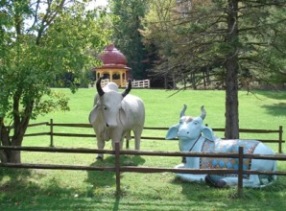
Welcome to Brijabasi Spirit
Thank you for taking the time to visit the New Vrindaban community blog. Think of visiting our blog as making a virtual pilgrimage.
Hare Krishna Hare KrishnaKrishna Krishna Hare Hare
Hare Rama Hare Rama
Rama Rama Hare Hare
"May cows stay in front of me; may cows stay behind me; may cows stay on both sides of me. May I always reside in the midst of cows."
Hari Bhakti-vilas 16.252
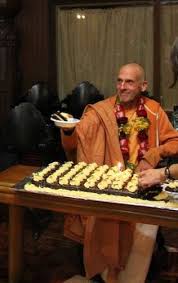
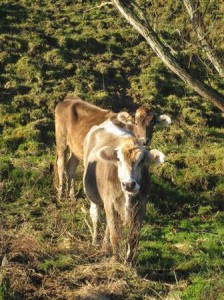
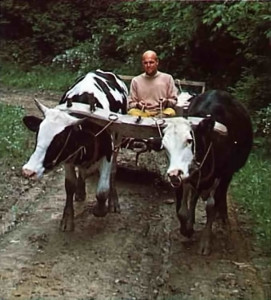
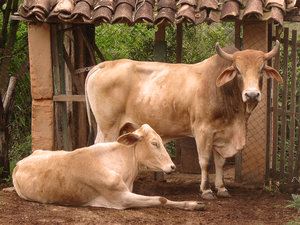
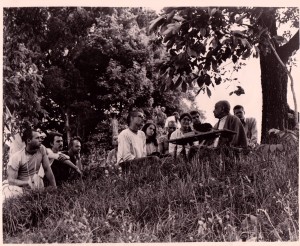






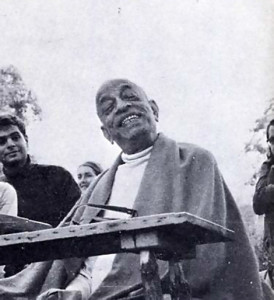
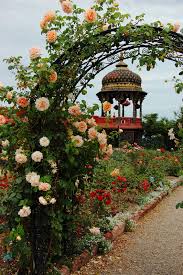
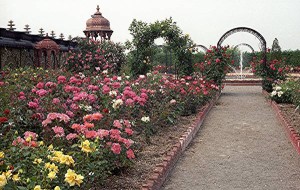





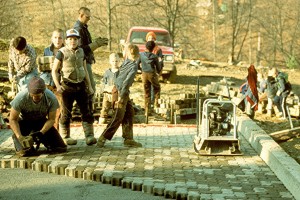




Recent Comments